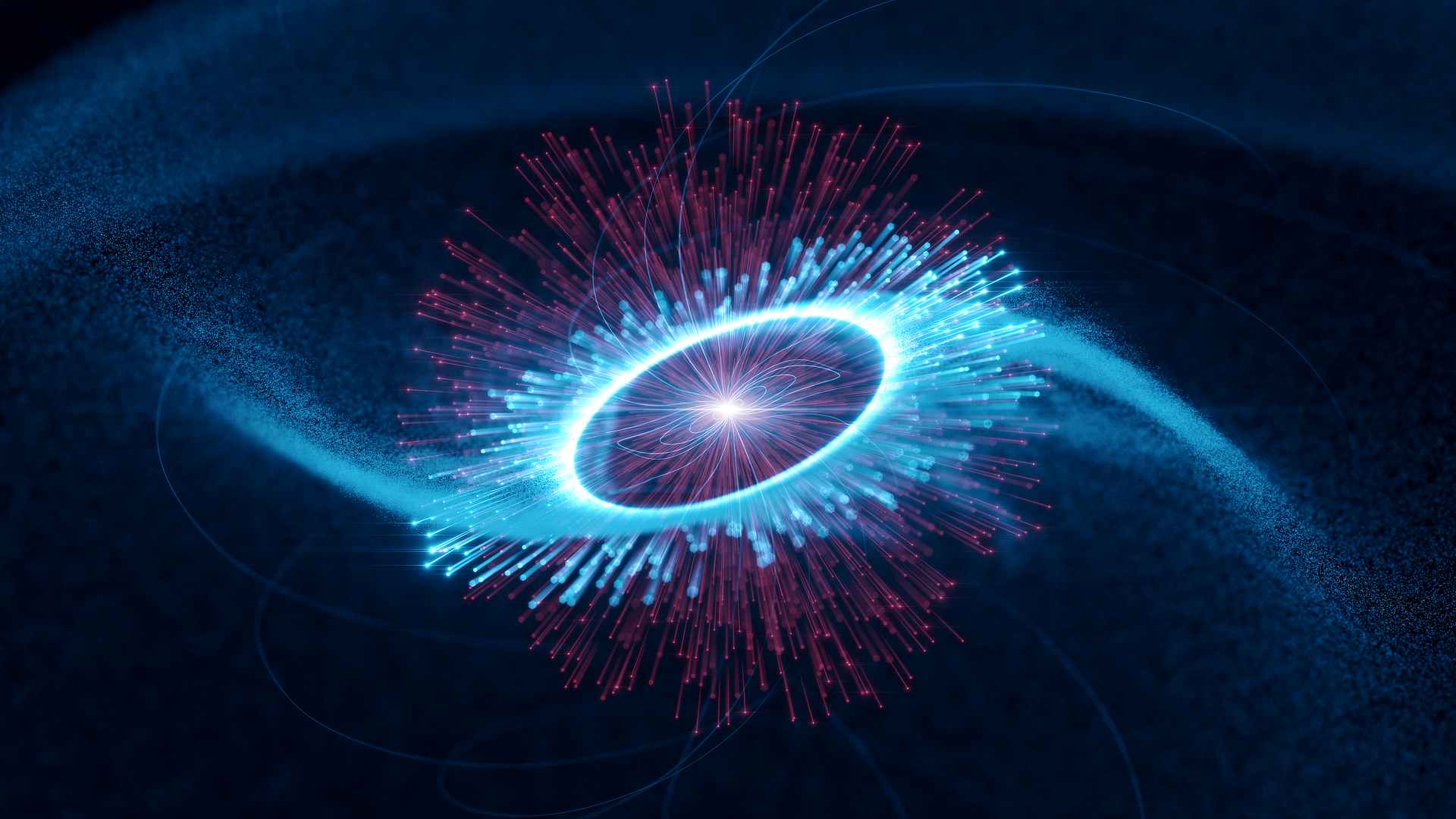Astrophysics: The observed pulsar is in a class of its own
The Vela pulsar emits extremely high-energy radiation. This unusual density challenges current models of these rapidly rotating neutron stars.
© Science Communication Lab / DESY (detail)
Diagram of a pulsar: Shows how infrared light particles (photons) are lifted from the poles of a pulsar into gamma ray energy (blue) by fast electrons.
Just because a star is “dead” doesn’t mean it can no longer shine. The Vela pulsar proves this perfectly: according to new measurements, its gamma ray energy is 20 teraelectronvolts (TeV), about ten trillion times the energy of visible light. It is difficult to reconcile this observation with previous theories of pulsed gamma ray generation. Arash Janati Atay of Paris City University and his team write in ‘Physical Astronomy’.
Pulsars are the remains of stars that exploded in a supernova. They are very compact, spin very quickly, and have an enormous magnetic field. “These dead stars are composed almost entirely of neutrons and are incredibly dense: a teaspoon of their matter has a mass of more than five billion tons, which is about 900 times the mass of the Great Pyramid of Giza.” explains co-author Emma de Una Wilhelmi of DESY. Thousands of pulsars are known so far, but only four emit gamma-ray pulses so powerful that they can be detected by ground-based telescopes. Only one of them emits gamma rays made up of photons with energies greater than a teraelectronvolt: the Vela pulsar, which rotates on its axis eleven times per second.
The working group is now able to observe that this pulsar shines more intensely than previously known. At 20 TeV, it releases 20 times more energy than has been measured using any other pulsar to date. This does not fit the two common models. Both rely on the collision of high-energy electrons with low-energy photons that form gamma rays. Models differ in how these electrons are accelerated in the first place. In one case, they are eliminated by interactions with the pulsar’s magnetic field. Or they are propelled to high speeds by the rotation of the pulsar. However, it is difficult to reconcile both with the newly discovered gamma rays, which have no clear upper energy limit.
“How and where are the electrons accelerated? That is the question,” says Janati Atay. “Until we find out, we can’t fully understand pulsars, how they affect their surroundings, or why the Vela pulsar produces such unusually intense radiation. We may be seeing particles accelerated through so-called magnetic reconnection outside the cylinder of light,” he said. Which somehow still maintains the rotation pattern? But even this scenario faces difficulties if we want to explain how such intense radiation is generated. During magnetic reconnection, the structure of the magnetic field suddenly changes, releasing large amounts of energy.
Please allow Javascript to maintain the full functionality of Spektrum.de.

“Alcohol buff. Troublemaker. Introvert. Student. Social media lover. Web ninja. Bacon fan. Reader.”






More Stories
Minister and great biochemist: Hans Tobey is dead
Dwarf Dragon – Spectrum Science
Zelinger defends cooperation with China